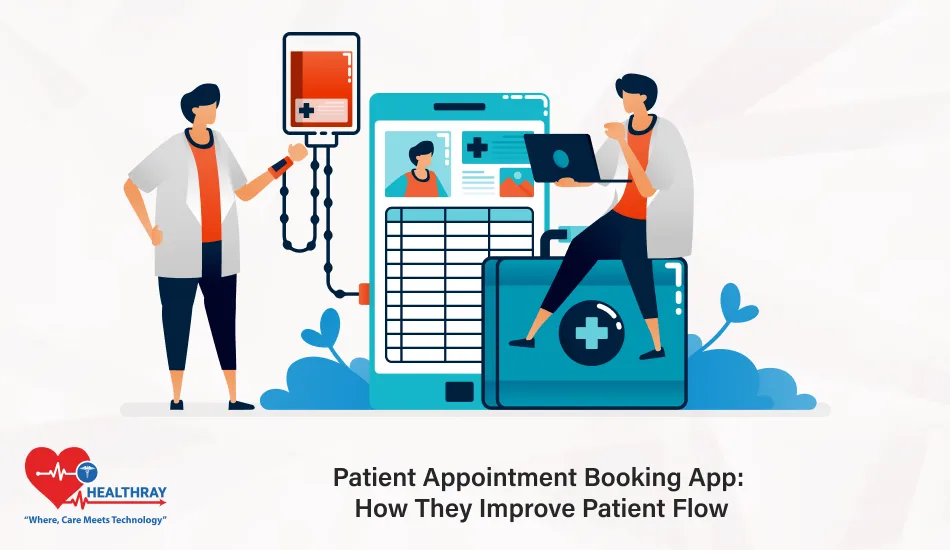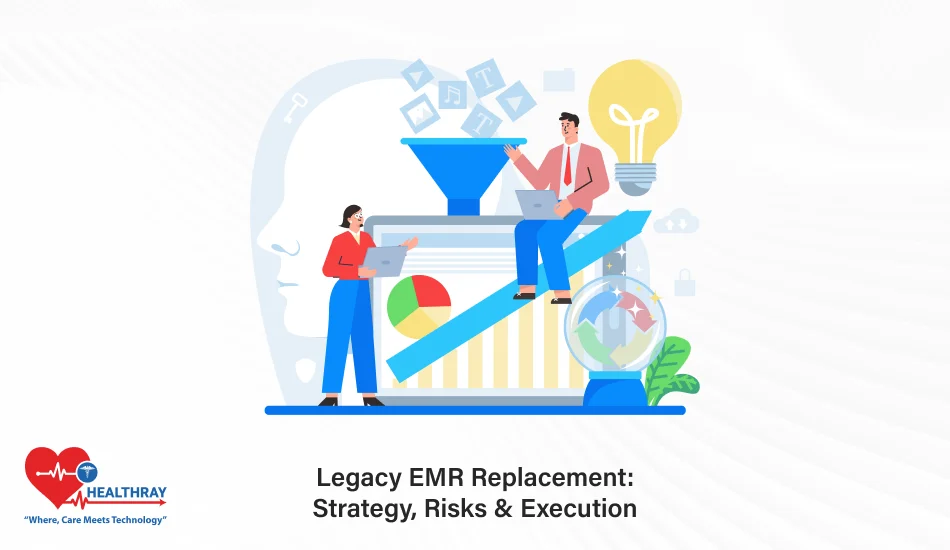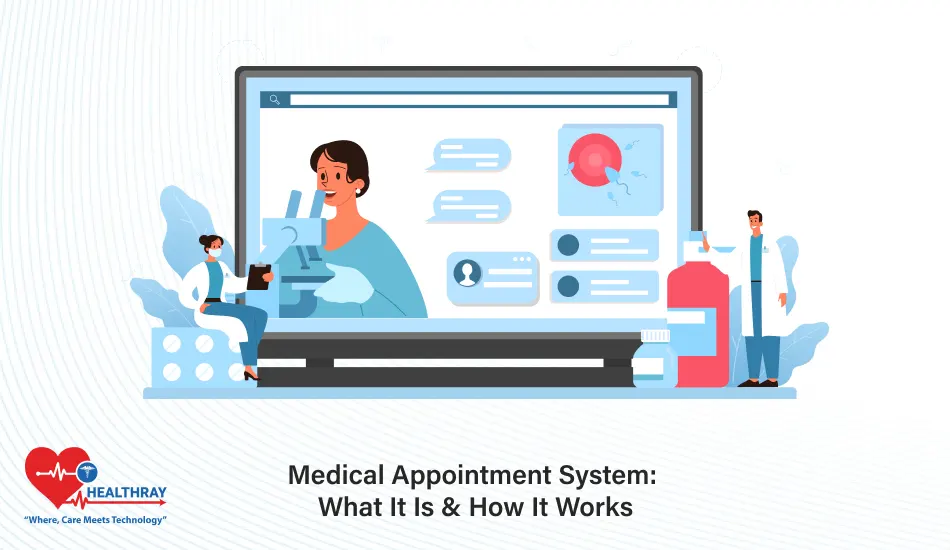Introduction
Nothing is more important in health care than efficiency. Every minute wasted on paperwork and data entry is one minute less with patients; each time there is a delay in finding patient information, the chances of providing good care diminish. Thus EHR systems have become ubiquitous in hospitals, clinics, and private practices. They are useful for storing and rapidly retrieving all sorts of patient information; they improve the accuracy and accessibility of records while streamlining and securing the workings of healthcare.
EHRs do more than just keep records; they enhance connectivity and interoperability so different departments can view each other’s data, offer analysis to help better decision-making, and even ensure smooth navigation between telemedicine options and in-office visits. With the right EHR system in place, healthcare professionals are able to offload administrative burden, minimize mistakes, and spend more time involved in direct patient care.
This guide will provide insight into discerning the right EHR system for boosting efficiency, aids for healthcare workers, organizational leaders, and physicians. It covers basic features of interest to users, a comparison of the prominent EHR solutions for both clinical and hospital use, and insights for practical customization and implementation of the system. Whether for improving clinic workflow or enhancing patient outcomes, our guide offers information to assist sound and informed decision-making with regards to EHRs.
Understanding EHR Systems

Electronic Health Record (EHR) systems are primarily designed for collection, storage, and access to patient information in a digital format by all healthcare providers. EHR systems allow for a central and secure environment for viewing patient data in real time, unlike conventional paper records. Time is critical in any health care scenario, especially accuracy; hence, electronic health records.
Primarily, EHRs store patient data like their health history, lab results, diagnosis, and prescriptions. However, the majority of modern EHRs do much more by adding functionalities for things like patient portals, telemedicine integration, and interoperability with other healthcare software. Thus, Patient Health Records will be a pool of information for providers to allow speedy update across teams, departments, and even medical facilities.
The selection of the EHR system considered which features would actually benefit the daily operations of the health providing institution. Key functions considered must comprise the following:
- Patient Record Management: Core to any EHR, this feature should allow healthcare providers to quickly find and update patient information.
- Clinical Workflow Tools: These can automate parts of the patient intake process, helping streamline check-ins, documentation, and patient tracking.
- Interoperability: EHR systems should connect with other healthcare technology and tools, such as lab systems, imaging software, and pharmacy networks, to ensure seamless data sharing.
- Data Analytics: Some systems provide insights into patient trends, helping clinics track and manage chronic conditions or identify areas for operational improvement.
- Telemedicine Support: With the rise of remote care, many EHRs now offer telemedicine features, allowing providers to connect with patients virtually and manage appointments online.
An effective EHR system can do more than just organize data. It can actively improve workflows and ensure that every patient’s information is accurate, accessible, and up-to-date. This becomes essential for healthcare professionals who wish to concentrate on the care of their patients, transferring these administrative workflow loads into an efficient practice.
Successful Steps to Boost EHR Efficiency

Implementing the EHR system is an important move for any healthcare practice, which requires proper planning and strategizing to ensure easy transition. The benefits of an EHR are pretty clear; still, on the ground implementation may not be as favorable. Follow these few practical steps to maximize gain and minimize loss during implementation.
Define Clear Goals and Objectives
The first step is to determine what you want the new EHR system to accomplish. Do you want to streamline patient check-in, facilitate quick access to records, or save time with administrative duties? Clear objectives will help guide customization of the EHR system to suit your needs and facilitate measuring success.
Involve Key Stakeholders from the Start
Involving doctors, nurses, administrative staff, and IT right from the start is critical, as they can shed light on workflow issues, point out their expectations from the system, and give feedback on what functionalities are required. They will be more likely to embrace the new system and thereby assist in its successful implementation if they are part of the conversation right from the launch.
Invest in Comprehensive Training
Training is one of the most vital components in the EHR implementation process. Staff members need to be appropriately trained to use the functions of the EHR system. Training must include everything from data entry to pulling patient records to scheduling functionalities. Most EHR vendors provide training programs, and this would involve spending time early on but would pay off later by easing common mistakes and confusion.
Migrate Data with Caution
Data migration is usually the most difficult part of each Electronic Health Record implementation. Patient records, billing information, and other vital information should be thoroughly migrated to the new system. The IT team involved in the development of the EHR system should collaborate to ensure proper mapping has taken place and that secure transfer carried on for all data. Testing of migrated data could affirm the identification of any issues before going live on the system.
Execute a Pilot
Before a system is used on a full scale, it is advisable to initiate a pilot run in one department or with a limited number of end-users. From there, challenges with the system can be identified and resolved, workflows can be adjusted, and your team can become more comfortable with the software before a full-scale rollout across the practice.
Continue to Measure Change and Collect Feedback.
After the EHR system goes live, it is important to monitor for its impact on your practice. Are wait times reduced? Are records being accessed in a much easier way? This is also the perfect time to collect feedback from staff regularly and to reconfigure those systems or workflows periodically. Constant monitoring and changes made will ensure that the EHR system meets your practice with a changing dynamic.
Implementing EHR systems is a process that looks to be at an end with the EHR system going live. Continual tweaks, feedback collection, and training make sure that your team can maximize use of the new system and that it continues to assist you in achieving set goals.
Customization and Scalability of EHR Systems

Get an Electronic Health Record (EHR) system that changes along with your specific needs in practice. With customization features, an EHR system works with peculiar workflows, different specialties, and operational preferences of various healthcare providers. In contrast, with scalability features, it grows and develops along with the growth of your practice, which is a good indication of a long-term investment rather than a short-term solution.
Why Customization Matters
No healthcare practice looks entirely like the other; hence, it is quite rare that a one-size-fits-all approach will meet the needs of every provider. Customizable EHR systems allow healthcare professionals to modify features to suit their practices, from specialty-specific templates to customizable dashboards and workflow automation. For instance, while a pediatric clinic may wish to address star charts and immunization records in their template, a mental health practice may be greatly concerned with therapy notes and tracked patient progress. Such adjustment to templates and forms and procedure modification enhances overall productivity, hence tailoring the EHR system to exactly what is needed by each practice.
The Value of Scalability
On the other hand, scalability becomes vital, especially for those practices expecting to grow in patient numbers or even grow in service offerings. Scalable EHR systems allow the smooth accommodation of the growing amounts of data, increased number of users, and introduction of additional features without any efficient constraints. Generally, scalable systems would offer a modular solution, permitting the practices to pick and choose solutions such as telemedicine or data analytics or patient engagement portals in the wake of developing needs, thus allowing scaling of the EHR system to respond as per the growth of the practice towards the changing needs and thereby preventing the recurrent cost and disruptions of switching systems.
Finding a Customizable and Scalable EHR
When assessing EHR systems, it becomes critical to ask for the options for customization and scalability. Will the system allow for easy template modification? Can it accept a higher patient volume and integrate with new technology? Considering this will guarantee that it meets your current needs and operations at the time of commitment.
Buying a customizable and scalable EHR classification surely means that your practice will have a flexible and powerful tool that is congruent to your goals while transforming with your organizational growth. The foundation not only will serve efficient operations, but it will also work wonders on patient care delivery.
Training and Support for EHR Systems
Perhaps training and support on EHR Systems could be given basis of implementation. After proper training and extending continuous support from a good EHR system implementation, all team members would feel comfortable with the new system and able to use it. Once that happens, it is only then that the EHR system reaches its full potential when healthcare professionals explore continued and sustained support even if they receive proper knowledge about the system.
The Importance of Proper Training
As mentioned above, bringing on a new EHR system into a practice can be a big enough undertaking. In the absence of appropriate training, people might just feel overwhelmed or frustrated. Such comprehensive training teaches each and everyone-from physicians to administrative staff-on how to online therapy navigate through the system, how to enter the patient data with integrity, and how to retrieve important information in an efficient manner. Critical areas of data entry, scheduling, billing, and privacy protocols should be covered during these training sessions. Most EHR providers conduct training or onsite support during the initial rollout, which can highly help staff get accustomed to the system quickly.
More Support, More Optimal Use
Ongoing support comes in handy after the original training is completed. All the software companies nowadays have available trained support teams for a healthcare practice that are indulging themselves in troubleshooting related to the issues, performing updates, and customizing the system per requirement. It comprises both technical support for addressing any technical software-related problems and features like user guides, online forums, or customer service teams in resources. Staff feels more confident using an EHR system because some issues would take place before reaching workflow.
Refresher for Periodical
Some refresher training will most definitely be valuable to particular practice units as technology changes and workflow changes. Those will also be of value when software is updated or new features introduced. Refresher training assists users to maintain the newest functionalities of the system so that the EHR system works to become a better tool as time goes by. Those will also address some of the recurring challenges that users face, while reinforcing best practices for efficiency.
All these wrap up into the benefits a healthcare practice can reap from having continuous comprehensive training coupled with continuous support, as that would maximize the benefits reaped from EHR systems, reduce errors, and hence improve efficiency.
Real-World Examples of Improved Efficiency with EHR Systems
Lifetime observations on a myriad of instances have seen improvements in efficiency and the quality of care of patients due to the adoption of EHR systems. Some of these real-world examples depict how different healthcare organizations have implemented EHRs to enhance workflows, cut errors, and, ultimately, help render better services to the patient.
A Large Hospital Network Reduced Patient Wait Times
To mitigate inefficiencies in patient check-ins and data retrieval across departments, a large hospital network instituted a comprehensive EHR system. Centralizing patient records in a single platform open to all departments has enabled instant sharing of information among healthcare providers within the hospital. This modification tremendously slashed patient waiting times since healthcare professionals no longer had to rely on paper charts or to wait for data transfer from department to department. Enhanced data access promoted swift and conscientious decisions by the doctors, thus contributing to increased efficiency and patient satisfaction.
A Small Clinic Improves Billing and Revenue Cycle Management
A small medical clinic found it difficult to manage billing tasks with a manual system; therefore, delays and errors were frequent. With an EHR system containing billing and revenue cycle management tools, the clinic was able to automate some of the billing processes and make fewer errors with payments. Analyzing the EHR system allowed the clinic to understand some of the common issues that arose in their billing, thereby getting the clinic on track to improving its revenue cycle and cash flow. The clinic has fewer billing disputes now, thereby allowing the administrative team to focus their time on patient care.
A Specialty Practice Adopts Telemedicine for Remote Consultations
There has been heightened demand for remote healthcare, and a specialty practice supported these demands by implementing an EHR system that embraced telemedicine. This enabled them to run virtual consultations and document the process online through their EHR, bridging the gap between providers and patients. As a telemedicine facility, the EHR not only assisted the practice in extending its reach to a maximum capacity of patients but also ensured that all records and documentation were kept in one place. By simplifying virtual care, the practice enhanced patient satisfaction while affording a vast array of appointment options.
A Mental Health Center Enhances Patient Documentation
This mental health center has made efforts to better its documentation accuracy and its patient tracking. By implementing an EHR system with tailored mental health templates, providers were able to more efficiently document patient interactions, therapy notes, and progress assessments. Templates guided structured documentation, which diminished the time spent on note-taking while ensuring the recording of critical information. As a consequence, the mental health center has seen improved continuity of care, with providers able to easily track patient progress and make informed treatment decisions.
The aforementioned examples go to show how EHR systems can make a significant difference in healthcare practices of all stripes and sizes. From enhancing patient experiences to lowering administrative burdens, a well-chosen EHR system can sway the way a practice is run, into paths of increased efficiency and responsiveness to patient needs.
Conclusion
Choosing the right Electronic Health Record (EHR) system can mean life or death for those healthcare practices that want to be, and are, on the path towards improving efficiency and patient care. An EHR system that is well suited for the practice, the needs, and the system in general does not spare the time for productive record keeping; it aligns itself in twists and turns into the whole workflow, curtailing errors along the way, with the priority always being that patient data is accurate and is a click away. From customizable functionalities and accommodating scalability to hassle-free telemedicine integration, EHR systems can embrace various preset options to suit the unique needs for varied healthcare settings.
While evaluating EHR systems, keep the specific aims of your practice in mind along with the growth plans for the future. Look for a solution that can satisfy your operational needs and that works smoothly with your staff’s workflows without creating more confusion. Ongoing training and support will ensure the maximum benefit of the system implementation and allow your team to operate at maximum potential.
As always, the right EHR system improves workflow efficiency, which simultaneously improves the quality of care you can give to your patients. Once set in place, the right system will enable your own practice to withstand the modern health care demands, thereby allowing you more time with patient care and less with paperwork.





